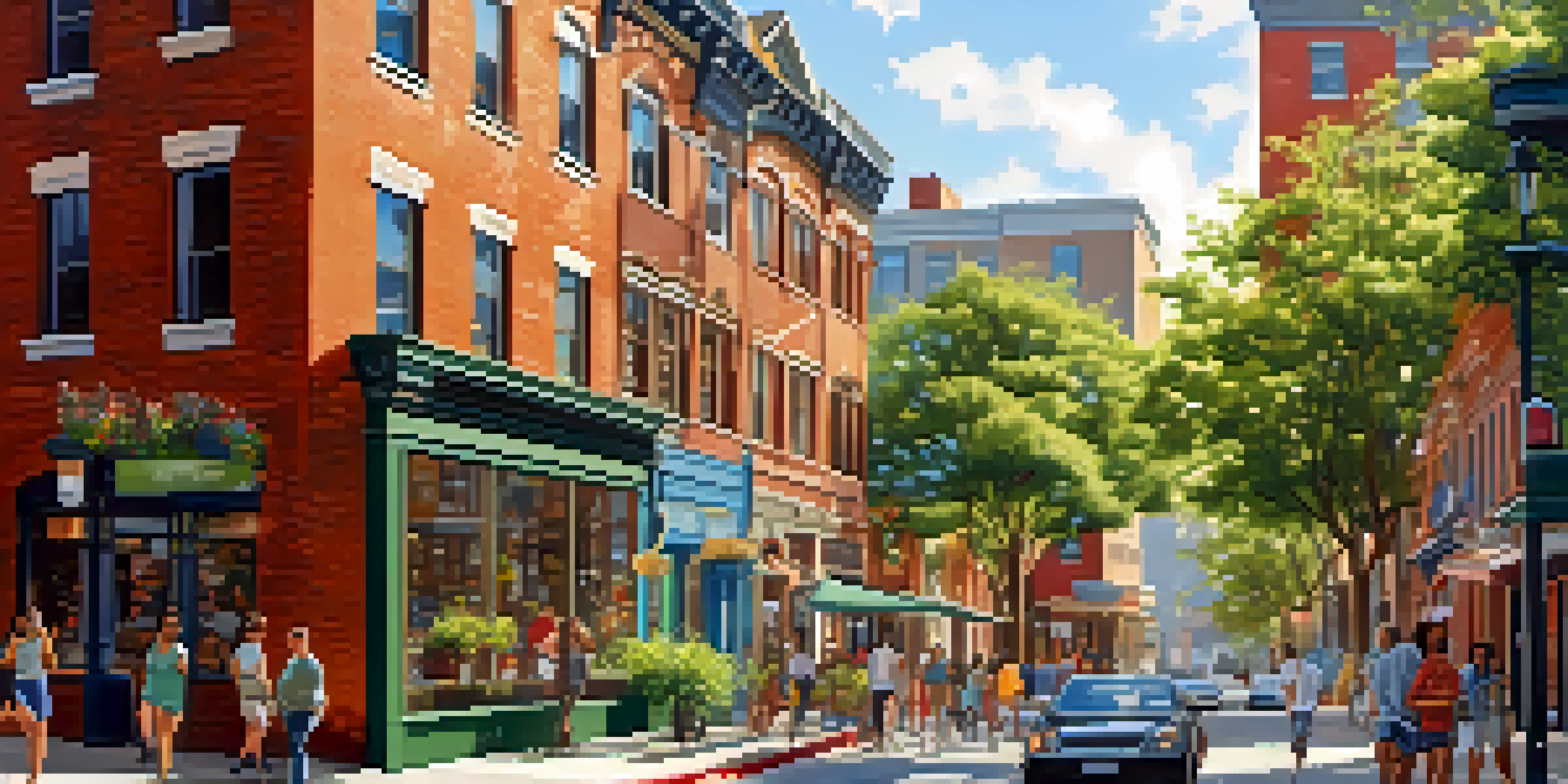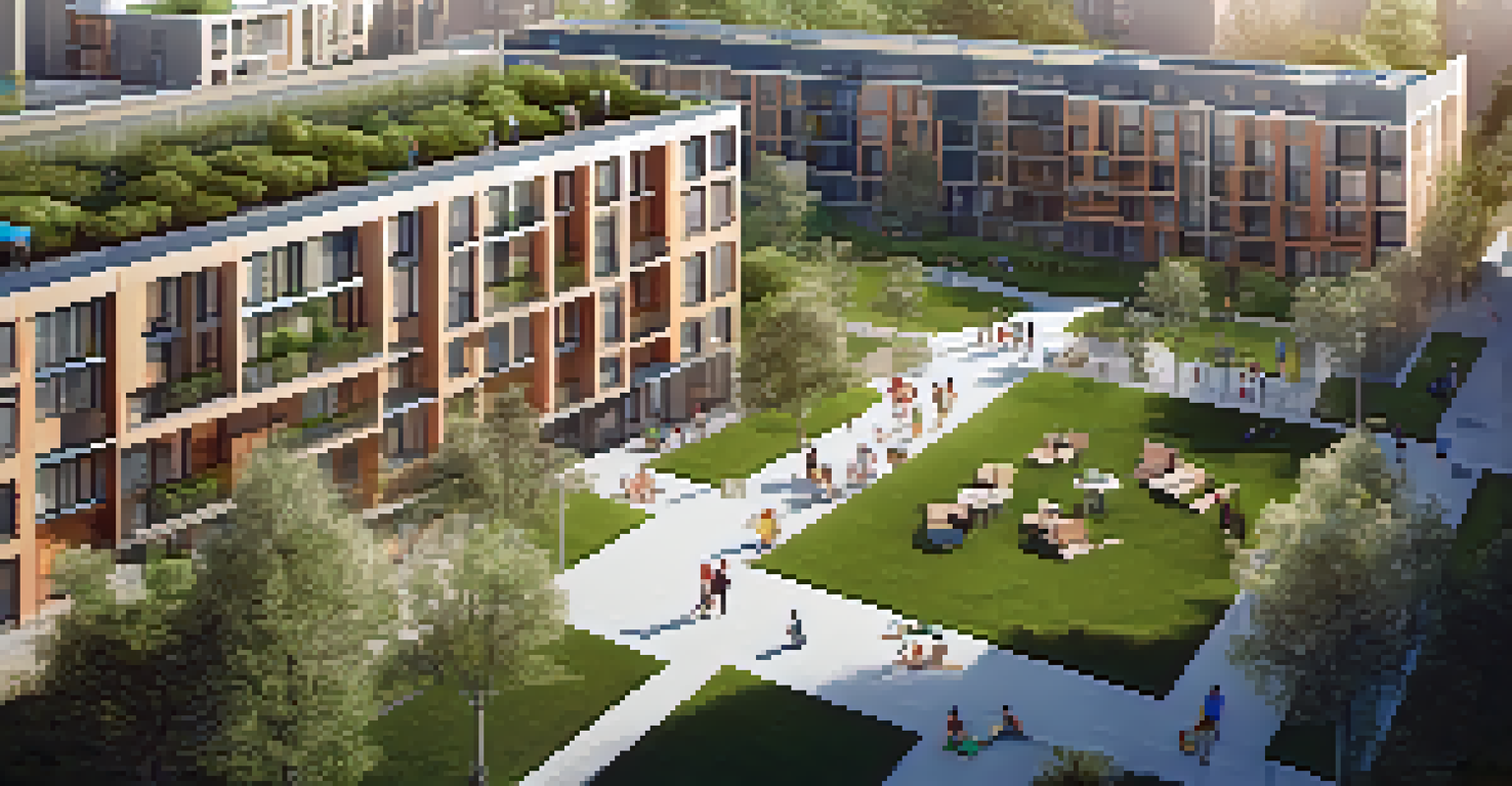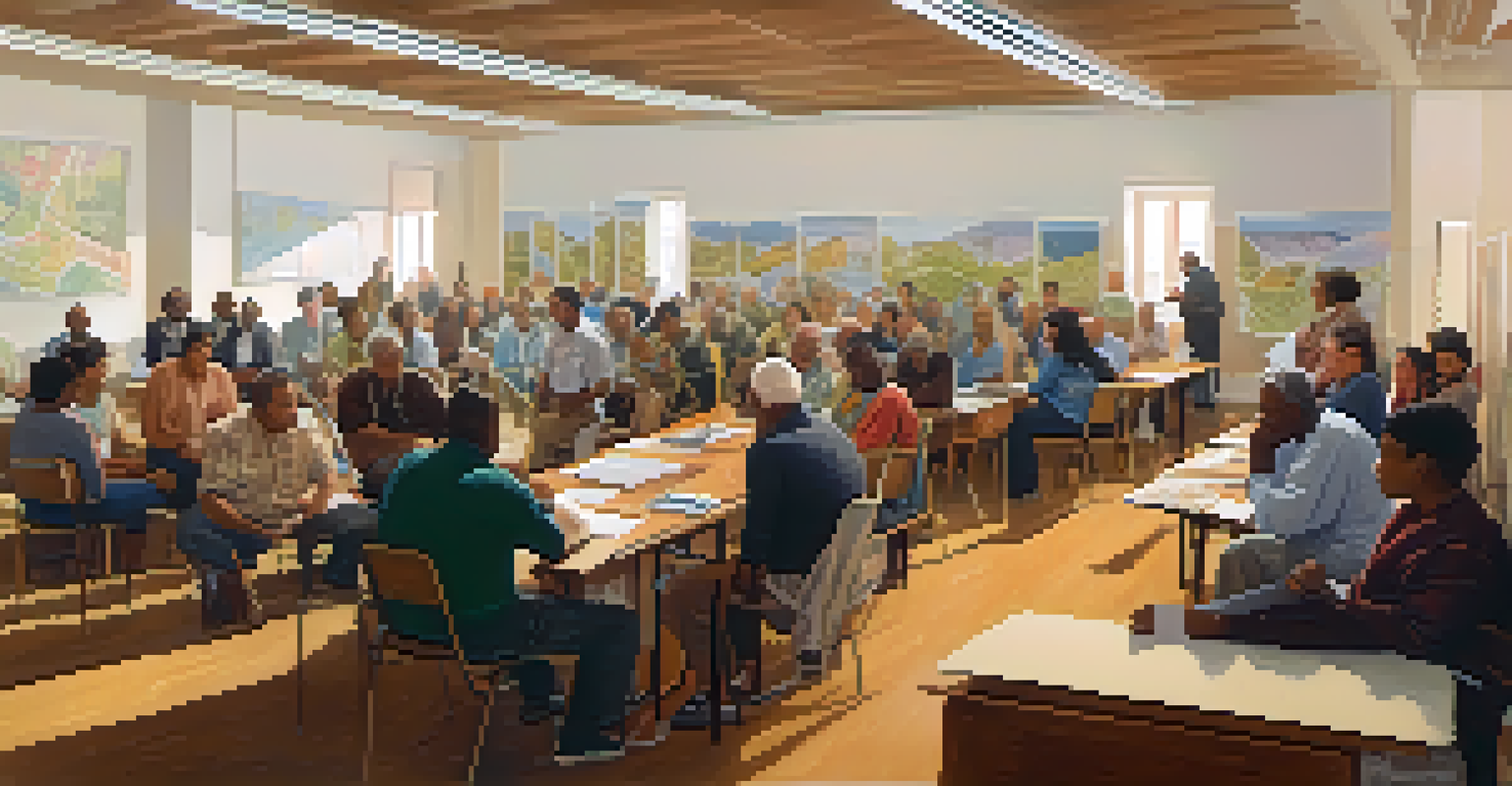Gentrification and Urban Development: Balancing Growth

Understanding Gentrification: What It Means for Cities
Gentrification is a term that often stirs up heated debates. At its core, it refers to the process where wealthier individuals move into a previously lower-income neighborhood, leading to increased property values and rents. This influx can bring revitalization, but it also raises concerns about displacement of long-term residents. It's crucial to understand both the benefits and drawbacks to grasp the full impact on urban communities.
Gentrification is a complex issue that is often misunderstood. It’s not just about the new residents moving in; it’s about the lives of those who have been there all along.
Imagine a neighborhood that once thrived on its unique, eclectic charm suddenly becoming a hotspot for trendy cafes and luxury apartments. While this new development can attract businesses and improve infrastructure, it can also alienate the very people who made the area vibrant in the first place. The challenge lies in striking a balance between improvement and preservation.
To navigate the complexities of gentrification, city planners and community leaders must engage in open dialogues with residents. These conversations can help identify the needs of existing communities while considering new developments. By fostering collaboration, cities can work towards growth that respects both history and progress.
The Role of Urban Development in Shaping Communities
Urban development plays a pivotal role in transforming cities, influencing everything from transportation to housing. It encompasses various projects, such as building parks, schools, and residential complexes, aimed at improving the quality of life. However, the challenge is to ensure that these developments meet the needs of all residents, not just newcomers.

Think of urban development as a double-edged sword; it can either uplift a community or deepen divides. For instance, a new shopping center might create jobs, but if it leads to rising rents, the very locals who benefit may soon find themselves priced out. Therefore, a strategic approach is essential to ensure that growth is inclusive.
Gentrification's Dual Impact
Gentrification can revitalize neighborhoods but often displaces long-term residents, creating a complex challenge for urban planners.
Incorporating affordable housing into urban development plans can be a game-changer. By setting aside units for low-income families, cities can maintain diversity and prevent displacement. This not only supports existing residents but also enriches the community as a whole, creating a more balanced urban environment.
Economic Growth vs. Community Preservation: The Dilemma
One of the most contentious issues in urban development is the tension between economic growth and community preservation. On one hand, cities strive for economic vitality, which often means attracting new businesses and residents. On the other hand, preserving the cultural and historical essence of neighborhoods is equally important, as it fosters a sense of belonging.
The best way to predict the future is to create it.
Consider a historical district that is revitalized with luxury apartments. While this can boost the local economy, it may also erase the unique character that drew people to the area in the first place. The key is finding a way to modernize while respecting the past, which requires thoughtful planning and community involvement.
By prioritizing policies that promote small businesses and local artisans, cities can support economic growth without sacrificing community identity. Engaging residents in the planning process can lead to solutions that celebrate local heritage while accommodating new developments, creating a win-win situation.
Community Involvement: A Key to Successful Development
Effective urban development hinges on active community involvement. When residents participate in decision-making, they can voice their needs and concerns, ensuring that developments reflect the community's values. This participatory approach not only builds trust but also fosters a sense of ownership among residents.
Imagine a community meeting where local voices shape the future of their neighborhood. Such gatherings can lead to innovative solutions that might not have surfaced in a top-down approach. By prioritizing engagement, cities can create development plans that resonate with the people who live there.
Community Engagement is Essential
Active participation of residents in urban development decisions fosters trust and ensures that projects reflect community values.
Moreover, community involvement can serve as a counterbalance to gentrification. By empowering residents to advocate for affordable housing and public spaces, cities can mitigate the risks of displacement. Ultimately, collaboration can pave the way for growth that benefits everyone.
Innovative Solutions for Balancing Growth and Stability
In the face of gentrification, cities are exploring innovative solutions to strike a balance between growth and stability. One approach is implementing policies that promote mixed-income housing, allowing diverse socioeconomic groups to coexist. This can help mitigate the displacement often seen in rapidly gentrifying areas.
Think of mixed-income housing as a melting pot; it encourages interaction and collaboration among residents from different backgrounds. This not only strengthens community ties but also fosters understanding and inclusivity. Such developments can create a vibrant atmosphere that benefits everyone.
Additionally, cities can explore tools like community land trusts, which allow residents to collectively own and manage land. This model can provide a buffer against market pressures, ensuring that housing remains affordable. By exploring creative solutions, cities can protect their unique identities while embracing growth.
Case Studies: Cities Navigating Gentrification
Examining case studies of cities grappling with gentrification can offer valuable insights. For example, Portland, Oregon has implemented policies aimed at preserving affordable housing while promoting development. Initiatives like inclusionary zoning require developers to allocate a percentage of new units for low-income residents, a strategy aimed at safeguarding diversity.
Similarly, cities like San Francisco have faced significant challenges due to rapid gentrification. However, local government initiatives, such as tenant protection laws, have been introduced to help prevent displacement. These measures reflect a growing awareness of the need to balance development with community needs.
Innovative Solutions for Balance
Strategies like mixed-income housing and community land trusts can help cities maintain diversity and prevent displacement amid growth.
By learning from both successes and failures, urban planners can refine their approaches to gentrification. Case studies serve as reminders that while growth is essential, it must be managed thoughtfully to ensure that communities thrive together.
Looking Ahead: The Future of Urban Development
As cities continue to evolve, the future of urban development will hinge on finding sustainable and inclusive solutions to gentrification. The focus will likely shift toward creating spaces that foster community engagement and collaboration. This means prioritizing projects that not only enhance the urban landscape but also uplift existing residents.
Envision a future where urban development is guided by the principles of equity and sustainability. Such an approach could lead to cities that are not only economically vibrant but also culturally rich. By valuing the voices of all residents, cities can create environments that celebrate diversity.

Ultimately, the challenge of balancing growth with community preservation is ongoing. However, with proactive strategies and collaborative efforts, urban development can become a force for good, benefiting everyone who calls the city home.